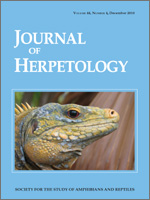We examined the influence of reduced hemoglobin concentrations resulting from malarial infection on metabolism and thermoregulation in the Fence Lizard, Sceloporus occidentalis. Malarial infections diminish the oxygen-carrying capacity of the blood, depressing hemoglobin concentrations by as much as 25%. Lizards collected from Oregon were screened for Plasmodium mexicanum. Malaria-infected and uninfected lizards were placed on a temperature-controlled treadmill at preferred body temperature (35°C) and induced to walk at constant speed for 5 min (0.7 m min−1) or sprint maximally to exhaustion (<2 min of activity). Excess oxygen consumption during recovery was over 30% higher in infected lizards when compared to uninfected lizards following similar levels of activity. Malarial infection significantly elevated blood lactate levels following sprint or endurance activity (20 and 36% elevation, respectively) when compared to uninfected lizards. Malarial infection significantly increased preferred body temperature tested in a thermal gradient following sustained activity (2–4°C increase) but had little impact on thermoregulation following exhaustive exercise. There was a strong negative correlation between hemoglobin concentration and postactivity body temperature. Our findings suggest that there are metabolic costs, measured as excess oxygen consumption and thermoregulation disruptions, associated with malaria-induced hemoglobin depression. These results may help explain limited size and reproductive success previously measured in malaria-infected lizards.
BioOne.org will be down briefly for maintenance on 17 December 2024 between 18:00-22:00 Pacific Time US. We apologize for any inconvenience.
How to translate text using browser tools
1 December 2010
Impact of Malarial Infection on Metabolism and Thermoregulation in the Fence Lizard Sceloporus occidentalis from Oregon
David A. Scholnick,
Richard V. Manivanh,
Olesya D. Savenkova,
Tony G. Bates,
Shana L. McAlexander
ACCESS THE FULL ARTICLE

Journal of Herpetology
Vol. 44 • No. 4
December 2010
Vol. 44 • No. 4
December 2010




